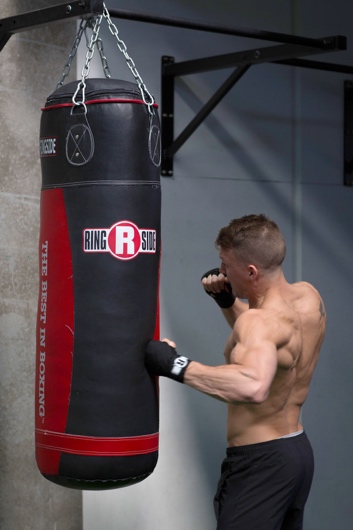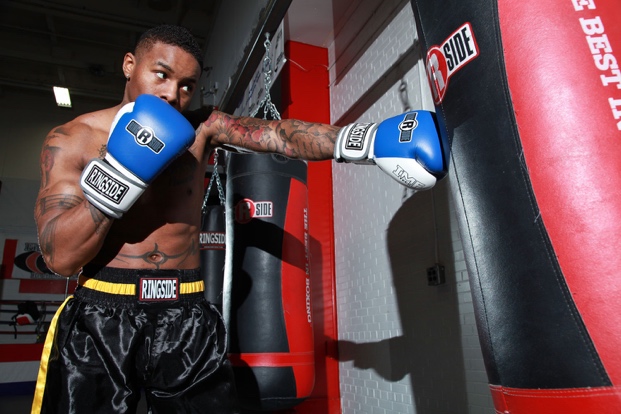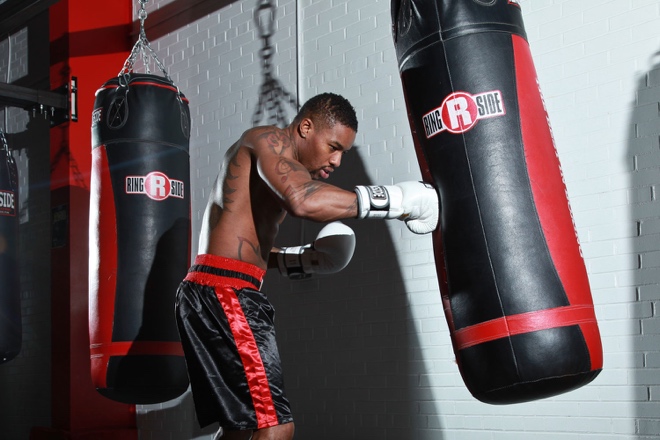
So, you’ve finally made the decision to add a punching bag to your home gym. Smart choice! Now you can reap the many benefits of boxing fitness in the comfort of your own home. Before you run out and buy the first punching bag you see, there are a few things you should consider first. For instance, how large is your space? What do you want to achieve from your boxing workouts? If you don’t do your research, you’re likely to end up with a punching bag that doesn’t meet your specific needs. To save yourself both time and money, keep the following in mind:
Start with Your Goals
First, ask yourself why you’re getting a punching bag in the first place. Is it for general fitness purposes? Or do you have more specific boxing goals you’d like to accomplish? If you’re looking to increase the speed of your hands, hand-eye coordination, and punching skills, speed bags are a good choice. These punching bags are small and can be mounted on the wall, allowing them to easily integrate with existing home gym equipment. For general fitness, a free-standing punching bag may best suit your needs. Free-standing punching bags are used for all different kinds of mixed martial arts and are extremely versatile. From low kicks to jabs and crosses, you can use this bag to practice a variety of moves.

Consider Your Living Space
Even the smallest of living spaces can accommodate a punching bag. However, there is no point in taking a closer look at some punching bags if they can’t possibly work for your home. If you live in an apartment and want to improve your punching speed, speed bags are a convenient option. If you rent a house, a free-standing punching bag is ideal because you don’t need to hang it from the ceiling or all. You’ll also want to consider how much the punching bag will swing. Heavier punching bags won’t swing as much as lighter punching bags.
Know Your Options
As you’ve no doubt realized, punching bags come in an endless number of styles, materials, sizes, and weights. This is because punching bags have evolved to meet all kinds specific needs and types of boxers; men, women, and kids of all ages are reaping the benefits of boxing fitness. Before you settle on a punching bag, you need to carefully weigh all your options. Did you know that there is more than one type of heavy bag? Or that punching bags can be filled with sand or water?
It may seem daunting to go through every option, but it’s critical if you want to buy the right punching bag the first time around. To make things easier on you, check out our Buyer’s Guide to Punching Bags. You’ll get a better overview of what’s available for punching bags outside of your local sporting goods store.

Partner vs. Solo
One downside to boxing at home is that you usually don’t have a partner to practice with. Fortunately, there are ways to get around this problem. There are many punching bags that allow you to train as though you’re sparring with another person. For example, a double-end bag is designed to bounce back from hits, forcing you to dodge and work on your defensive moves. There are also grappling dummy punching bags which are in the shape of a person. These heavy-bag dummies can be either suspended or free-standing and allow you to sharpen your takedowns and strikes.
Don’t Forget to Buy Additional Boxing Gear
In addition to shopping for a punching bag, you’ll also need to budget for high-quality boxing gear. This might include new bag gloves, hand wraps, and even mounting accessories to mount your punching bag to the wall or ceiling. When you purchase these accessories, the last thing you want to do is skimp on the quality. Boxing is an intense sport which can lead to injury when you use low-quality gear. Besides, purchasing high-quality boxing gear means that you are less likely to need to replace that gear any time soon. Invest in the right gear now, and you’ll save money in the long run.

